- Whether you’re writing a book, article, e-mail or social media post, a catchy headline will encourage readers to stop and look at what you have written. Note that the headline must be related to what you have written; if it’s totally off-topic, the viewer may open the e-mail this time but may discount future e-mails from you or unsubscribe.
- Your business (or individual) personality should shine through whatever you do.
- Make your posts timely. Value is lost if the discussion becomes “so yesterday.”
- Keep your content brief. Everyone is busy and if your content is too long, it’s ignored.
- Use interesting photos. If you are posting on Facebook, don’t just post a single photo. Add at least three to an album and comment on the photos for more follower interest.
- Include statistics or numbers (“…90% of people surveyed say our hot sauce is the best they’ve ever had!”).
- Use humor, if it’s appropriate for your product or service. Don’t try this if your business provides funeral services!
- Another option is video. Provide short, educational or informative pieces viewers will be likely to share with friends and associates.
- Use client testimonials. Real people talking about the benefits they received can be persuasive.
- Music can also catch attention. Match the music to your product or service.
- Try something different. Have you ever looked up at the TV when the chatter stops to see a commercial with only moving pictures or text across the screen?
Monday, December 12, 2011
Babies, Cats & Dogs...
Monday, December 5, 2011
Employee Information Exchange
Websites, shared document portals, social media and other tools allow all of us to easily disseminate information. But many times conference attendees return to work only to be overwhelmed playing catch up. Why not permit that employee to take some time upon his or her return to publish some high level notes that others might find valuable and save them on a shared document portal? Or, better yet, arrange a “lunch and learn” style presentation for the conference-goer to share some of what they learned.
Do you have an internal method or knowledgebase for employees to share information? Or maybe you’ve got a closed employee-only Facebook group or a blog that requires a login? Encourage employees to share what they have learned here, as well. Set some overall structure (for example, all information must be dated and placed into high level categories or have post tags applied to make searching easy) and basic rules (i.e., the information must have value, not a forum for complaints, must be verified when appropriate, etc.). Over time as the information base builds, employees will become used to adding new information and searching the site for answers to their questions.
Thursday, December 1, 2011
We Did It Together!
- Leone Noble & Seate
- David Allen Company
- Embassy Suites
- Davis Plastic Surgery
- Catalyst Group, Inc.
- Greenscape Inc.
- News & Observer
- Chad M. Richards, State Farm
Monday, November 21, 2011
While We Were Sleeping©
Jeff Nischwitz is a speaker with The Expert Speakers. He can be reached at jeff@thinkagaincoaching.com.
Monday, November 14, 2011
Mission MidTown Postscript
From Guest Blogger Doug Austin of WKIX AM-FM after the Raleigh Rescue Mission Radiothon on November 10, 2011.
I don't know if my feet have ever hurt this bad after standing for 16 hours on concrete...but I smile when I think about why they do.
Monday, November 7, 2011
Planning for 2012
- I am setting aside one afternoon without interruption to brainstorm about next year. Some of the questions I’ll ask:
- After mulling the answers to the above questions over, I’ll dedicate a second session to laying out a high level plan.
- Session three will have to include the budget. Love brainstorming, but not so much the budget process…
- The fourth and final session will be a more detailed planning session based on those pesky budget numbers and key benchmark goals.
Thursday, November 3, 2011
Our Partners are HOT!
- Leone Noble
& Seate
- David Allen
Company
- Embassy
Suites
- Davis Plastic
Surgery
- Catalyst Group,
Inc.
- Greenscape Inc.
- News & Observer
Friday, October 28, 2011
Coats + Blankets 2011
One of these activities is the second annual vitalink coats + blankets drive! Last year, with seven of our business partners, we collected hundreds of coats and cold weather items and quite a bit of cash to benefit the Raleigh Rescue Mission (www.raleighrescue.org). The economy is still struggling and there are many individuals and families here in Raleigh (as elsewhere) that are homeless or very close to losing their homes. Many are unable to afford to heat their houses or apartments and cannot buy warm coats for their children. Every time I think about my problems, I recognize how lucky I truly am compared to some others who struggle every day with the basics.
I encourage you to find a charity or a cause and donate your money, your time, or both. It can put things in perspective and you’ll feel better about yourself. If you are in the Raleigh area and would like to give to the vitalink coats + blankets drive, send us an e-mail or give us a call at 919.850.0605. If you’re not in the area, search locally for a shelter or other good cause and give them a call. You’ll be glad you did.
Tuesday, October 25, 2011
Lessons from Tebow
While he has amassed great accolades and went in the first round of the draft, Tebow is far from perfect. Many thought he would go in a much lower round of the draft due to his throwing style. Many questioned if he could play in the NFL at all as a quarterback. Hmmm, I seem to remember some of the same nay-sayers with former Gator and Dallas Cowboy Emmitt Smith (the NFL’s all time leading rusher). They thought he was too small, too slow. He was just determined and set records that still stand today.
Bottom line, Tim Tebow inspires me to accomplish things. One of his high profile team mates commented that his style and delivery may not be pretty, this guy is “magical.” I agree. He inspires his team mates. He inspires followers. The game this past weekend was in Miami and the Dolphins fans were cheering for Tebow (the other team)! His jersey, #15, is the #1 selling jersey in the NFL.
Here are a couple of lessons I’ve learned from Tebow:
1. You don’t have to fit the mold or have the best “mechanics;” be passionate and work hard— don’t let anyone say you can’t do something. You might just succeed and inspire others along the way.
2. In a “bad boy” athlete era, Tim Tebow is respectful talking with the media, respectful of opportunities and of his team. Kudos. Be respectful and you’ll get that back a hundred fold.
3. Being the best (as defined by others) or having the best grades doesn’t mean you’ll be the best leader. It also doesn’t make you the best producer. So what if you are a little different. Play your game. Work at it and play hard and with heart.
4. This guy would literally pick the team up on his back if he could. His most memorable speech came after a loss at Florida when he said he’d let the team down, but nobody would ever work harder than him. He took responsibility and then worked his butt off.
5. Don’t be afraid to be yourself. Share your passion and you will find like minded people and earn respect. Tebow went on mission trips as a youth and still thanks God. Like it or not, you gotta respect him.
6. He is passionate about this game. Find something you love and commit to being your best. It won’t always be easy and you won’t always win, but there is joy in it.
Football fanatic (like me) or someone who doesn’t know what pigskin is, these are some great lessons. What have you learned from someone that you didn’t expect to learn from? I’d love to hear some other words of wisdom from unexpected sources!
Wednesday, October 5, 2011
BUILD YOUR TEAM
Your retreat should always take place away from the office and technology. Depending on the type of retreat you choose and your budget, this can range from meeting in the backyard of a senior manager who lives on the lake to renting space at a local hotel to a full-service weekend “adventure” retreat that includes outdoor team building exercises. The point is that you are away from distractions. Have everyone dress comfortably and intersperse some physical activity with your sit-down sessions to keep people from tuning out. Add a creative session or two to get the juices flowing; this doesn’t have to be anything fancy—you can use something as simple as an opposites word game or simple drawing exercise. And don’t forget healthy, nutritious food to keep everyone alert (okay, and some chocolate for good measure).
There are several types of sessions that may be of value during a retreat:
Tuesday, September 27, 2011
Post Seminar Engagement
- Create a Facebook Group and invite attendees to join to continue the discussion online. Groups can be open (anyone can see content) or closed (limited access).
- Send a follow up e-mail with a link to the materials or reminder tips from the session.
- If the number of attendees is manageable, send handwritten thank you notes with brief reminders outlining the top points of the session. You might include a logo item with a salient message as a reminder.
- Make sure to include your Twitter handle, Facebook info, e-mail and blog address (encourage RSS) so attendees can easily contact you and learn more. Click on the icons below for ours!
Tuesday, September 20, 2011
CRM&M Series, Part 3: Using New Technology
Tuesday, August 30, 2011
So what does your marketing firm do?
My old answer would have been to list our services and talk about how we are great at reasearch and strategy. Not just the dry technical part, but how we make it work for real life marketing campaigns. I might have gone on to talk about how our creative director is amazing at what he does, media buying skills, etc. I'd have had a list of other things. But I'd have put the passion we feel about helping our clients solve problems much lower on the list. I would have been guilty of burying the lead.
There are a number of marketing firms out there that can do great creative, media buying, websites, research, etc, but that is only part of the equation. We tend to go a little deeper to help with business development. Where the magic happens is the thought, planning direction and working WITH the client to get the campaign done in the best way possible. I've realized over the years, while we provide a single source for many clients, there are others who have internal or external resources that can get the job done too. Working with all team members concerned to integrate the campaign and make it cohesive is huge.
Want just an ad? We may not be the right 'vendor' to do it. Want someone who solves problems in a thoughtful and strategic manner? Want someone who cares about your business deeply and works as a brand manager? That is us.
I've learned that I'm OK if we aren't the right firm for every client. That lets us concentrate our efforts on those who fit us the best. Then this amazing synergy happens. We get a psyched and our clients benefit from better results. We love what we do and it shows.
~ Jeanne Frazer
CRM Marketing Series: Part 2 | Relationship Building
Tip #1: Our favorite reminder—avoid the hard sell! If you communication is always about your business and products, people will tune out.
Tip #2: Let your personality shine through. Read the full article…
Monday, August 22, 2011
CRM & Marketing Series: Part 1 | Why Market to Current Customers?
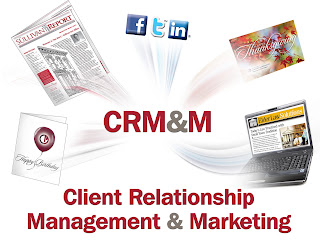 That’s a great question. The best answer I can give you is that it costs 3-8x more to acquire a new customer than to retain an existing one. In today's competitive marketing environment, business owners and managers need every advantage they can get. Customer relationship management and marketing (CRM&M) keeps your business on the top of the mind of your customer. By doing so, customers are more likely to buy again, or upgrade to the next level, and the ‘reminder’ encourages them to be your advocates, and can generate referrals as your current customers recommend you to their friends and families.
That’s a great question. The best answer I can give you is that it costs 3-8x more to acquire a new customer than to retain an existing one. In today's competitive marketing environment, business owners and managers need every advantage they can get. Customer relationship management and marketing (CRM&M) keeps your business on the top of the mind of your customer. By doing so, customers are more likely to buy again, or upgrade to the next level, and the ‘reminder’ encourages them to be your advocates, and can generate referrals as your current customers recommend you to their friends and families.
There are both newer and tried and true methods you can utilize to stay top of mind with your customers. The channels you use will vary depending on your audience and what products or services you provide. Here are a few of our favorites:
1. Newsletters – newsletters are a popular way to educate and interest your clients. You may want to alternate printed and email versions. Read the full article...
Wednesday, July 20, 2011
An Intern's Perspective
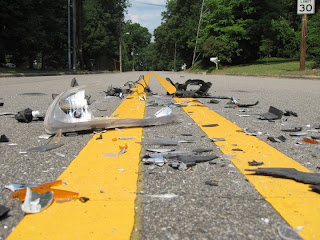 By Guest Blogger & vitalink Intern Adrienne Bryant
By Guest Blogger & vitalink Intern Adrienne BryantOne of the creative projects I was assigned recently was to take photographs of an automobile accident scene for the cover of a book called Wrecked. The whole process was extremely fun. One of the first things I had to do was find old broken car parts I could use to create the scene, so the morning before the shoot I picked up an old headlight from a local body shop. As I was contemplating how exactly to bust it up, smashing it with a baseball bat kept replaying in my head, one of my good friends texted me. The conversation began with the typical, “What’s up? I’m good, how are you?” and changed when my friend said, “I’m okay, I got in a car accident yesterday and my car is destroyed.” Thinking about it now, I probably didn’t respond in the most thoughtful manner when I said, “OMG that’s awesome! Do you have a broken headlight?” After explaining myself, she agreed to let me have her busted headlight and I was now prepared to set up my accident scene.
When I got home from the office the day of the shoot, I quickly changed clothes and grabbed the headlights and my baseball bat. I set the headlight down in the middle of the front yard and got ready to swing. I was pretty excited since I hadn’t swung a bat since I had stopped playing ball a few years ago. After a few hits, the headlight was busted but not into small enough pieces. I had to think bigger, I glanced over at my car and decided to put all of the headlight pieces in a plastic bag, place it in the middle of the street, and run over it with my car. I probably should’ve done this in the first place because I successfully smashed the headlights into tiny pieces and the momentum from the car spread the pieces out perfectly over the street.
So many cars drove by while I was shooting pictures that I had to continually stop and wave them around. A lot of people looked at me like I was crazy standing in the middle of the street with broken glass, headlights, and a camera, but some people actually stopped to ask if I needed any help. I got tired of explaining and soon adopted the short explanation of, “school project.”
I started taking photographs from multiple angles, but one of my favorites was with the camera positioned low on the street so I could get a longer perspective. I arranged the headlight fragments in a few different ways to get multiple scenes. In one particular series, I used a bigger piece of the headlight in the foreground. I feel like this gave a focal point for the eye and allowed for the viewer to understand and take in more of what was going on in the scene. In some of these shots, I tried to achieve a balance by having the bigger piece in the front left and a shot of the speed limit sign in the back right corner.
Overall, the shoot was a lot of fun and I loved that it allowed me to use more of my creative side. It’s kind of surreal to me that I was allowed to do all of this as an intern and that one of pictures I took is actually going to be used on a published book cover. I would’ve never gotten the chance to do this at a larger company. I’m extremely grateful for all the opportunities I’ve gotten at vitalink; to have hands on experience, learn new things and use the talent and knowledge that I have.
Friday, July 8, 2011
Do Your Press Releases Attract Media Attention?
Over the years, we have compiled some “best practices” that we would like to share. Even for our clients who continue to use our PR services, these guidelines may help you to determine whether or not an event would be newsworthy so that you may let us know to proceed with a PR. Here are some thoughts:
- Is the item unusual enough to warrant the attention of the public? A milestone business anniversary, revolutionary new product, free seminar offering, acquisition of another firm, or the fact that you won a big case would likely all be of interest. On the other hand, if you write a blog post about a subject that has been covered by a hundred others before you, it is likely not press worthy.
- Is the notification timely? Many businesses—especially if they are large—struggle with getting communications out the door quickly. With the pace of information flow these days, old news is just that. Plan ahead whenever possible and react quickly if there is no prior notice.
- Does the item position the firm in a positive light? Ideally you want to showcase news events such that the firm benefits. There are exceptions, however, so if there is a negative item that should be addressed with a public statement, get it out there quickly. Controversy can generate a lot of discussion!
- Is the news item a “feel good” people story? People like to know who you really are on a personal level. Showcasing employees as they give back to the community or if they have a positive event can help with relationship building.
In short, items that are interesting, relevant—and sometimes even controversial—will generate media attention and, with luck, that elusive notice by (and conversation with) customers and prospects. We'd love to hear what types of press releases you've found generate the most interest. Let us know!
Tuesday, June 28, 2011
Session Formats + Audience Involvement
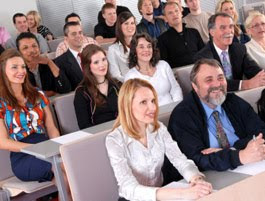 When you attend or plan an event, you must consider the presentation format for each session. The overall size of the event, number of concurrent sessions, topics to be covered and location space must all be considered. The most common presentation settings are:
When you attend or plan an event, you must consider the presentation format for each session. The overall size of the event, number of concurrent sessions, topics to be covered and location space must all be considered. The most common presentation settings are:Auditorium: Generally a larger room with chairs facing a stage or podium from which the speaker delivers the presentation. Room size can vary but may include hundreds in the audience.
Classroom: Typically a smaller room with tables. Chairs face a white board or screen for presentation. Hands-on computer or training sessions favor this set-up. Room capacities are usually smaller (up to a few dozen people).
Roundtable: Most roundtables are very limited in size (fewer than 20 attendees). A conference style table with chairs surrounding it is common, though not required. Roundtables are usually highly interactive.
Panel: Panel discussions typically are held in auditorium-style settings, with at least two panelists (experts) who will answer questions and offer opinions during the session. This is an interactive format, but tends to be more structured (Q & A) than a roundtable.
Virtual or Web-based: Virtual sessions have become commonplace as companies try to curtail travel expenses. These can be done through a phone conference, webinar (using web conferencing software like Webex), or using the newer and highly functional virtual trade show software packages (for example, ON24) that have concurrent sessions in different virtual auditoriums, chat rooms, trade show “booths,” etc.
In our experience, the most effective seminars or presentations involve the audience to some degree. How you encourage participation is often dictated by the presentation setting. In an auditorium setting with 200 attendees, asking for and receiving input has traditionally been done by asking participants to hold questions until the end of the session and then having a moderator carry a microphone from person to person so they may ask their questions of the presenter. A current popular option is to ask participants to send (or “tweet”) questions via Twitter using a pre-defined hashtag. In a virtual setting with a large number of attendees, online chat or tweets are also common. The best option for true interaction is still the roundtable. This format encourages back-and-forth discussion that is not as easily accomplished in other settings or using Twitter.
Most event agendas will specify the type of setting for each session. This gives attendees a good idea of what to expect. If you are planning an event, in addition to the factors mentioned above, consider also the style of your speaker and audience expectations. To learn more about our professional speakers, please visit The Expert Speakers website.
Wednesday, June 8, 2011
Tips for Delivering Bad News
As the president of my homeowner’s association board, I recently had to deliver news regarding the need for a special assessment to cover unanticipated repairs to our pool decking. Two-thirds of homeowners would have to approve the special assessment for us to be able to make repairs. Given the current economic environment, the timing couldn’t have been much worse. I tend to be very analytical and my approach to problem resolution follows: research the issue, determine options, and select the “best” option from the bunch. Unfortunately, when you ask the owners of 225+ homes for money, their opinions and emotions come into play!
So, what’s the best way to deliver tough news? In my experience, whether you are delivering news that your audience considers negative or simply explaining change (we all know how much most humans like change!), there are some basic protocols that can help:
- Do your homework! Ask questions of the “experts” you’re dealing with. Don’t be embarrassed if you do not understand what they are telling you or their recommendation. Make them explain. You can’t know everything. The Internet is a great resource to gather information, but you may find that the answers you get conflict by source. Log all your questions and add to the list as you go. Answer the old basics: who, what, when, where, why and how.
- Lay out all your options. You don’t have to like them, but you should consider ALL options (including “do nothing”—what if we don’t open the pool this year?).
- Investigate any vendors you deal with. Check the Better Business Bureau and ask for references. Get everything in writing.
- Be prepared to have your audience question what you did and why you made a particular choice. If you’ve done your homework, you will have most of these answers. The goal is to build your case and show that you have done the necessary due diligence. Several owners came to the open meetings intending to vote against the assessment. After hearing the presentation and getting a better feel for the amount of research we had done, they all changed their minds.
- Communication is paramount. Communicate early and often, and keep records of everything that is communicated. When confronted with change, people tend to push back. It’s important to give them sufficient information to gain their acceptance and trust that you have made the best decision.Note that you may not want to communicate 100% of the information you have garnered through your research, but you should provide documentation that explains the options you considered and justifies your decision.
If you have to present information that you feel will be negative, controversial or are concerned that people will be upset, plan out how and when you will deliver the news. Ideally you will not deliver the news until you have done your research, but sometimes it gets out anyway; be prepared to hold a pre-meeting meeting. If you don’t know the answer, say so and then find out.
Include in-person meetings whenever possible to allow the audience to ask questions. You do not want to be in the position of answering questions one at a time via email! I have found face-to-face meetings to be much more effective than phone calls, email or video conferencing. When all else fails, a large bottle of Tums just might help!
Tuesday, May 3, 2011
TV Viewing Habits are Changing
A comparison of the Advance/Preliminary 2012 National Universe Estimates with 2011 National Universe Estimates for Total TV Households, Black or African American U.S. TV Households, Hispanic or Latino U.S TV Households and Asian American U.S. TV households is provided below:
Total U.S. TV Households
• The advance Total TV HH estimate decreased to 114,700 (000) from 115,900 (000).
• Persons 2+ in U.S. TV HHs declined 1.8% to 289,290 (000) from 294,650 (000).
• Overall, we are seeing the aging of the U.S. population, with Baby Boomers “aging out” of some traditional buying demographics and fewer Gen-Xers to replace them.
Hispanic U.S. TV Households
• Hispanic TV HH experienced an increase of 5.2%.
• Growth remains strong at 3.9% for Persons 2+ in Hispanic TV HHs. Strongest increases were demonstrated for older categories where Age 55+ increased by 11.1%.
Black or African American U.S. TV Households
• Black or African American TV HHs experienced an increase to 14,230 (000).
• Persons 2+ in Black or African American TV HHs remained relatively stable, increasing to 37,613 (000) from 37,596 (000). The largest population gains were in 18-34 and 55+ showing increases of 3.8% and 2.8%, respectively.
Asian U.S. TV Households
• Asian TV HH growth saw the largest increase of 9.8%.
• Persons 2+ in Asian TV HHs showed 9.0% growth from the official 2011 Estimates. Gains were predominately in the younger categories, where 2-11 increased by 10.8% and 18-34 increased by 16.2%. While Asian populations outpaced Hispanic populations in terms of total population growth, this should not be interpreted as a single year change in U.S. populations as adjustments due to the integration of the 2010 Census data contributed heavily to the increases in the Asian UEs.
Thursday, April 28, 2011
Keeping Customers Engaged

In last month’s article on privacy concerns, we promised some ideas on keeping your customers engaged and ensuring they want to continue to receive your communications. In today’s information environment, marketers are tasked with the challenge of capturing the viewer’s attention while they are being bombarded with messages from all directions.
So, what can you do to be the firm that captures attention? Here are a few tips:
- First and foremost, ask permission to continue communications. If you are mailing information out, have a phone number or email address for them to contact if they wish to opt-out of receiving mail from you. An easy unsubscribe process is required for email. While it’s great to have a large mailing list, there is a dollar cost associated with each contact. If they are really not interested, you are wasting money and annoying the reader.
- Educate, don’t sell. Your goal is to provide value. Does that mean you can’t use a 20% off coupon for e-mail newsletter subscribers? Not at all! An occasional coupon does provide value—but there are so many other options.
- Look for ways to connect on a more personal level. This might be including an employee profile in a newsletter or posting photos of a recent community service project on Flickr and adding a link to view them to your e-mail.
- Make it easy for people to share. There are free social sharing buttons available. Use them!
- Provide the information you promise. It can be extremely annoying to see a message that says, “Like us on Facebook to receive special discount offers,” only to be bombarded with other messages that do not meet expectations.
- Vary style and content – within reason. I say “within reason” because you don’t want to go so far off track on the subject or style that you have loyal viewers unsubscribe. But you also don’t want them to drop off because they hear and see the same message over and over. Keep it interesting!
We hope these ideas help you to capture the attention of your clients and prospects and, ultimately, drive new business to your door. We'd love your feedback on how you keep customers engaged. If you have any questions, feel free to get in touch with us at info@vitalinkweb.com or call 919.850.0605.
Wednesday, April 13, 2011
Law Firm Vanity Number Available!
This number is great for marketing messages. 1-855-GOT-HURT? We'll help. OR Get Alex. OR Get Paid. Think how you can use it in your state.
Vanity numbers increase ad effectiveness and help use every second of your ad to convey a message. Contact us if you'd like to secure your state. State monthly rates start at $449/month.
1-800-HURT-NOW is now available for Massachusetts. Contact jeanne@vitalinkweb.com for more information.
Tuesday, April 12, 2011
REACHing Out to Help Others
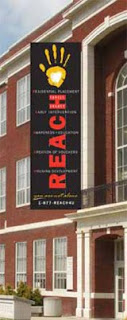
By Guest Blogger Mike Steele, Creative Director, vitalink
Over the past several years, I have done pro-bono creative and graphics work for a number of worthy causes. From a personal perspective, I truly enjoy volunteering with substance abuse programs—especially those that help teens. My most recent project was the design of a new logo for the REACH program in Cabell County, West Virginia. REACH is designed to give those in need of substance abuse treatment one place to go to start. The program is new and is expected to streamline the assistance process.
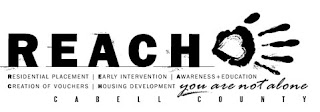
When I began to work on the design concept, I took into account my own personal experience. The main concept of the logo is to present an outstretched hand—a person reaching for help. The letters REACH as an arm with a handprint/heart at the end convey that help is available and there are those who care. I created both color and black and white options, some of which are shown here.
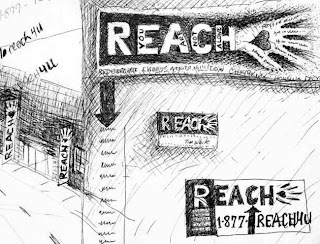
As a recovering alcoholic, I go back a couple years ago to the time when I hit ‘rock bottom’ and had to ask for help. Admitting we need help is one of the most difficult things for an addict to do. I remember being paralyzed with fear, feeling completely and utterly alone, even when surrounded by people, and feeling like I was the only one on earth who had ever felt this way. I was very skeptical and cynical about recovery programs because I didn’t believe there was hope for me. I chose the tagline, “You Are Not Alone,” to accompany the REACH initials.
While the heart is a “soft” symbol, the overall feel of the logo is a little ‘rough around the edges’ and has more of a ‘street’ feel to it. I wanted to present an image that these individuals could relate to—one that is more real in their world than the “sunset in the distance” concept that sometimes is used. The truth is when you are designing a logo, it does not have to “work” for everyone—it just has to resonate with the target audience.
About the Author
Mike Steele is the Creative Director/Graphic Designer for vitalink and has been with the company almost since the beginning. Most of the logos, newsletter templates, and creative design work that are produced by vitalink for its clients are the result of Mike’s talent and efforts.
Friday, April 8, 2011
Social Sharing During an Event
Beginning a couple of years ago, I began seeing conference attendees using their laptops and smart phones during sessions. I figured they were just checking e-mail, but many of these folks were out on social sites like Twitter and Facebook posting real-time comments about the session itself. The first time I saw this happen, my initial thought was that it was really rude. But then I began to think about the implications. How can a speaker, moderator or host utilize this information?
This practice of sharing during an event has become commonplace. Many conferences and virtual events now provide instructions on how attendees can provide feedback or ask questions during a session. A common example is asking attendees to submit questions for the speaker using Twitter and a pre-defined hashtag. This does require that the speaker have a moderator who can monitor the real time feed and ask the questions. The moderator can also monitor the feed for comments and help direct the speaker if necessary. For example, if someone posts, “audio stinks-can’t hear this guy,” the moderator can intervene and address the problem right then.
We’d love to know what you think! Post your comments and let us know!
Tuesday, March 29, 2011
Planning an Event? Using Internal vs. External Speakers
 Whether you are planning a client conference or putting together an employee retreat, you are probably working to line up speakers and fill the agenda. How do you decide when to use internal or client speakers versus hiring an outside speaker? Here are a few tips:
Whether you are planning a client conference or putting together an employee retreat, you are probably working to line up speakers and fill the agenda. How do you decide when to use internal or client speakers versus hiring an outside speaker? Here are a few tips: - If you do an annual client conference and you have internal resources that are subject-matter experts AND are good speakers, add them to the agenda. Okay, you should probably ask them first!
- Have a client who is knowledgeable AND a dynamic speaker? Invite him or her to speak.
- We recommend you mix up internal and external speakers – it adds depth to the agenda. Do make sure you have a large number of sessions that add value for the attendee. They should leave the event thinking they got more than their money’s worth!
- Bring in an outside keynote speaker to either do a motivational address or hire an expert speaker to talk about industry trends that your attendees might not have learned. Get them excited about the future and thinking about what your firm should be doing now to plan for the future!
- If you are doing an employee retreat, you may also want to bring in an outside speaker—either on some specific topic as an educational speaker or as a motivational speaker. It’s a change of pace from listening to the same internal folks year after year, and can bring new perspectives. It can also tell employees that you think they are important.
No matter what, do your research on your presenters—nothing is worse than an interesting topic delivered by a boring speaker! Tell us about the best (or worst) speaker you've ever heard. We'd love to hear your story! If you have questions, feel free to contact us at info@theexpertspeakers.com.
Tuesday, March 22, 2011
Email Still Outpaces Online Networking
Checking their Facebook and LinkedIn profiles and related activities takes up about 46 percent of their weekly time. Almost 75 percent say they check their e-mail every day, but fewer than half visit their social networking sites as frequently.
Given these statistics, it makes sense for you to have email as a component of your marketing plan. This may consist of monthly newsletters, coupons, invitations to special events or for free whitepapers or books. If you are not doing email now and need some help, give us a call at (919) 850-0605 or send an email: jfrazer@theexpertspeakers.com.
Spring = Beautiful Weather & Increases in Outdoor Risks
A friend missed work yesterday. This morning, he limped in wearing a cast on his arm and hand and a knee brace on one leg. Turns out he decided to ride his bike to work to enjoy the nice weather and save money on gas. He was hit by a car on his way to the office. After a short hospital ride and fun day in the ER, he was sent home to recuperate. Fortunately his injuries were not too severe. Unfortunately, this type of accident is all too common during nicer weather.
I just read an interesting article on bicycle accidents by attorney Annie Reynolds that offers some statistics on bike accidents and some safety tips. I thought I'd pass it along to you all. Be safe out there!



